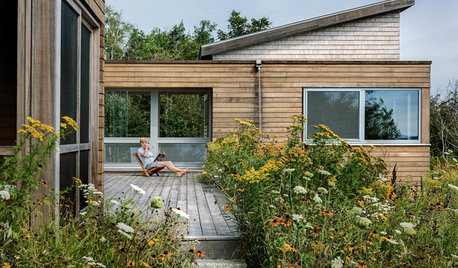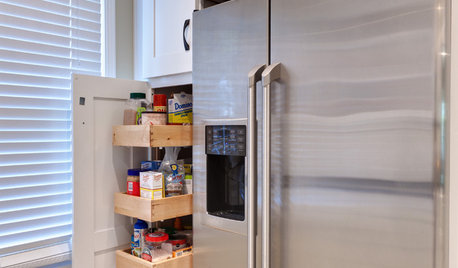All About Sweet Potatoes
lovetotweet
15 years ago
Related Stories

FOLIAGEGreat Design Plant: Ornamental Sweet Potato Vine
Versatile, fast growing, inexpensive and easy on the eyes, ornamental sweet potato vine has it all
Full Story
COOL-SEASON CROPSCool-Season Vegetables: How to Grow Potatoes
This ever-popular tuber is a stalwart in spring and fall gardens and a staple in kitchens everywhere
Full Story
PETSSo You're Thinking About Getting a Dog
Prepare yourself for the realities of training, cost and the impact that lovable pooch might have on your house
Full Story
FUN HOUZZHouzz Call: Tell Us About Your Dream House
Let your home fantasy loose — the sky's the limit, and we want to hear all about it
Full Story
EDIBLE GARDENSHow to Grow Your Own Sweet Summer Crops
This guide will help any gardener get started on growing the freshest warm-season veggies and berries for summer
Full Story
GARDENING GUIDES3 Ways to Revel in Summer Garden Sweetness
Patiently observe what works and doesn’t work in your landscape
Full Story
KITCHEN STORAGEPantry Placement: How to Find the Sweet Spot for Food Storage
Maybe it's a walk-in. Maybe it's cabinets flanking the fridge. We help you figure out the best kitchen pantry type and location for you
Full Story
GARDENING AND LANDSCAPINGWorld of Design: 10 Home Gardeners Show Us Their Sweet Summer Harvests
From New York to Tokyo, these gardeners have turned their yards, terraces and rooftops into places of bounty
Full Story
BEDROOMS10 Ways With (Almost) All-White Bedrooms
White rooms need a thoughtful tweak or two to bring on the sweet dreams
Full Story
PRODUCT PICKSGuest Picks: Sweet Safari Style for Kids
I spy something that's adorable and friendly but has a wild side. Make that 20 things, all for a child's bedroom
Full StorySponsored
Professional Remodelers in Franklin County Specializing Kitchen & Bath
More Discussions







oldbusy1
Okiedawn OK Zone 7
Related Professionals
Carlisle Landscape Architects & Landscape Designers · Sand Springs Landscape Architects & Landscape Designers · Towson Landscape Architects & Landscape Designers · Maple Valley Landscape Contractors · East Hanover Landscape Contractors · Holland Landscape Contractors · Mount Kisco Landscape Contractors · North Plainfield Landscape Contractors · Vancouver Landscape Contractors · Albemarle Decks, Patios & Outdoor Enclosures · Arlington Heights Decks, Patios & Outdoor Enclosures · Crystal Lake Decks, Patios & Outdoor Enclosures · Larkspur Decks, Patios & Outdoor Enclosures · Palmetto Decks, Patios & Outdoor Enclosures · Eustis Decks, Patios & Outdoor Enclosurestomatomanbilly
Macmex
Macmex
lovetotweetOriginal Author
nelda1234
Okiedawn OK Zone 7
nelda1234
leatherneckjoe
okiehobo
Melissa
Okiedawn OK Zone 7
Macmex
laura_lea60
Charlon12618
Macmex
chickencoupe
wbonesteel
Macmex
chickencoupe
Okiedawn OK Zone 7
chickencoupe
Macmex
chickencoupe
Olemanla
Macmex
slowpoke_gardener
Olemanla